The Institute of Directors has reiterated the importance of agreeing trade deals within the EU following Brexit, ahead of focusing on forging agreements further afield.
The warning was issued to the government by the IoD as international trade secretary, Liam Fox, looks to strike more trade deals with the rest of the world – a key benefit for Brexiteers in leaving the European Union.
With over 30,000 members, the IoD polled almost 800 company bosses and reported that the EU has provided stronger growth for exporting British firms than both North America and Asia since 2016, suggesting to ministers that trade needs to be boosted both with European neighbours and worldwide to achieve ambitions of creating a ‘global Britain’.
The research also showed that more British companies are exporting goods, up 7% over the last five years, despite the referendum result and invoking of Article 50.
Allie Renison of the IoD said: “Going global is as much about opportunities in Europe as it is further afield, and this should be reflected in how the government shapes post-Brexit Britain”, whilst also noting that ministers must ‘get real about trade, and fast’.
Despite business concerns over leaving the EU and single market, in particular, many company heads are optimistic over future trade prospects and international sales opportunities. One such study, carried out by HSBC, found that a third of firms surveyed predicted the outcome of Brexit would be positive for British business.
Head of commercial banking at HSBC, Amanda Murphy, suggested that firms are undeterred by future post-EU uncertainty and businesses ‘clearly aim to capitalise on the cheaper pound and rising demand in key markets’ to boost international sales.
Business beginning to shift focus to issues at home
And despite many questions still awaiting answers when it comes to business and Brexit, it appears UK forms have warmed enough to the prospect that attentions are flickering back to matters closer to home.
A survey by Deloitte which surveyed 106 company CFOs, including 25 of the FTSE 100, found that sluggish economic growth was now a bigger concern.
The CFOs assigned scored Brexit as a 56/100 risk towards their business, whilst weak demand at home scored 57/100.
Read more: 5 potentially lucrative export markets
Eroding spending power of consumers at home due to an inflation spike, plus market concern as household names including Toys R Us and Maplin entered administration, are two of the key contributors, as well as weak productivity growth and potential labour shortages.
However, the economy has shown signs of recovery in Q1 2018 with wage growth, including through the National Minimum and Living Wage, whilst inflation eases.
In fact, the same survey found that one-fifth of companies felt more optimistic about future prospects than they did in Q4 2017.
You’ve established your product or service, tested the waters in local markets, proved a concept, gained market position and the profit is rolling in. The next stage of growth for many companies would be to begin laying the foundations to begin exporting and trading abroad.
But to really launch a product in a different territory, a clear marketing strategy and immediate awareness campaign will be required to speak to this new audience. And whilst it may be easy to consider rolling out the exact same campaigns and strategies that won your success so far in your business’ backyard, cultural nuances, advertising regulations and brand positioning within a new market will all require thorough consideration.
But below the headier decisions over whether the lead role in a TV advert campaign needs to be recast or if the tone needs to be completely reworked for a new audience, there’s an entire digital strategy that needs to be implemented too to capitalise on gained awareness.
Here are three key digital marketing areas that can often be overlooked when marketing abroad, and they ought not to be left to the last minute:
User Language Preference
This may seem all too obvious, but understanding what language your new audience is comfortable communicating in is important.
For example, it’d be more than acceptable to expand a marketing campaign to include Wales without adding Welsh translations to the website – to begin with at any rate.
However, moving into territories where English is the second language, it pays to add first-language translations to the website, and also ensure all marketing communications are in the native language.
Why does it matter if the audience can read in English anyway?
For two reasons. First, it shows your business genuinely cares about engaging with that audience, that you understand how they like to do things and you’ve tailored your marketing comms and website experience accordingly.
Second, it adds an element of trust – but only if translations are done to a native standard. No offer of a translation looks lazy and can instil mistrust – fatal to e-commerce businesses in particular. But poor translations look amateurish and will result in the same outcome.
Understand how your new audience likes to communicate and tailor your user experience accordingly.
User Device Preference
There’s a common phrase in modern website design called ‘mobile-first’ – the idea that digital experiences should be created with a view to the user’s experience when consuming content via a mobile device – over designing expansive desktop experiences and attempting to tailor them down for a mobile audience.
In reality, this does ring true overall and it makes good design and UX sense to create engaging mobile experiences on-top of desktop and tablet ones too. Mobile loading speed, for example, is a direct Google ranking factor. But it doesn’t hurt to understand where it is your new audience is likely to consume your content and engage with your brand online.
A specific area in which this may affect marketing approach is in the form of app marketing. For example, in a zone where mobile telecoms infrastructure is generally poor, the country is less developed or the general population doesn’t own the latest smartphones with fast internet access, going all-in with a new app into the market or proportioning big marketing spend into the promotion of said app may prove unfruitful.
Understand where your new audience lives online
Much like with the above, just because you’ve had great success reaching your audience via certain channels at home, doesn’t mean those same channels are going to prove fruitful when you start marketing abroad.
Why? Because those channels and platforms may not be where your new audience lives online.
The first platform that springs to mind is of course, which search engine are your customers using? Despite that on a global level, Google dominates this market with a 91% market or ‘search share’, that doesn’t mean there aren’t regional fluctuations.
For example, in Russia, Yandex RU holds most market share at just under 54%, followed by Google with 43%. In the Asian search market, Baidu and Yahoo make up over 4% of the market, whilst in Mexico, a tiny percentage of users still browse the internet using Ask Jeeves and MSN!
And don’t forget those smaller, less competitive browsers too. For example, Bing and Yahoo with a combined 5.2% worldwide market share shouldn’t be discounted, with the former often offering cheaper CPAs via its ads platform.
And also consider which social media platforms are most relevant for targeting this new audience as well. Whilst Facebook dominates worldwide with 70% market share, Twitter, for example, is far more popular in the UK than it is in the U.S. with 15% market share compared to 6%. In fact, Pinterest is the second major player across the pond with 23.5% market share.
You can start to target your target audience and understand how your current website is performing by introducing marketing software to your sales tools.
Overall across Asia, YouTube is the second largest player on 11%, whilst Chinese social users use Youku almost as much as Facebook.
If you’re expanding your business into new international markets and would like expert advice along the way, including with your digital strategy and new market research, we can help. Find out more here.
As businesses grow, it’s natural to begin looking abroad to new potential markets. Likely the bigger economies are the first port of call, with the likes of the US, Asia and open European market big draws.
But sometimes, bigger isn’t always better when looking to take those first exporting steps, for reasons ranging from technical product restrictions and market saturation to import tariffs.
As such, here are five potentially lucrative emerging export markets and the most promising sectors within the regions:
Colombia
Unlikely to be top of most export hit-list target strategies and often overlooked by larger South American economies, the Columbian market has transitioned in recent years from being overly-regulated to a more free trade environment. A free trade agreement enshrined in law seven years ago and a growing middle class in the country has seen more and more companies sending trade envoys and researchers to the region.
Some of the most promising markets in Columbia include data processing services and technology, transportation consultation and expertise plus security equipment.
Indonesia
Home to the world’s fourth-largest population and the biggest economy in the Southeast Asian zone, Indonesia has enjoyed steady economic growth over the last decade with a GDPR growing from USD 510bn in 2008 to USD 932bn in 2016.
Indonesia also has a young population, tech and brand-hungry although major current markets centre around agricultural products, in particular from the U.S.
And despite an outwardly daunting regulatory environment, Indonesia is a market with a trend towards deregulation.
Top emerging markets in the region include IT services, banking, clean energy and education, whilst infrastructure is a key niche for improvement too.
Nigeria
Responsible for 40% of all imports in Western Africa, Nigeria enjoyed a GDP boom during the last decade with a strong growth forecast moving forward towards the middle of 2018. Whilst demand for U.S. product is high, there are still real opportunities in emerging markets for other exporters in areas including automotive, marine technology, financial services and health-care too.
Due to a high crime rate and potential for fraud in the region though, it pays to work with local authorities and regional export-experts in this zone to ensure a smooth process.
Vietnam
Vietnam’s GDP has surged within the last eight years, worth US 205bn in 2016 compared to just USD 99bn in 2008.
Often overlooked by larger players including China and Brazil, there is a big demand for a number of products and expertise in the region including plastics machinery, educational services, IT, wastewater treatment and even franchises too.
Morocco
Last but not least on this list of emerging export territories, Morocco’s GDP value has more than doubled since the turn of the century with an estimated worth of USD 101bn in 2016.
The first African country to secure a trade deal with the U.S., low labour costs and its geographical proximity to European markets has made it a key hub for companies exporting through into the African continent.
If your business works within renewables, water treatment, construction and security, there are big opportunities in this country to do trade.
Identifying Potentially Profitable Emerging Markets
If you’re currently considering your businesses’ exporting options, it pays to have the knowledge and expertise along the way. Learn more about how Go Exporting can support your international growth plans here.









